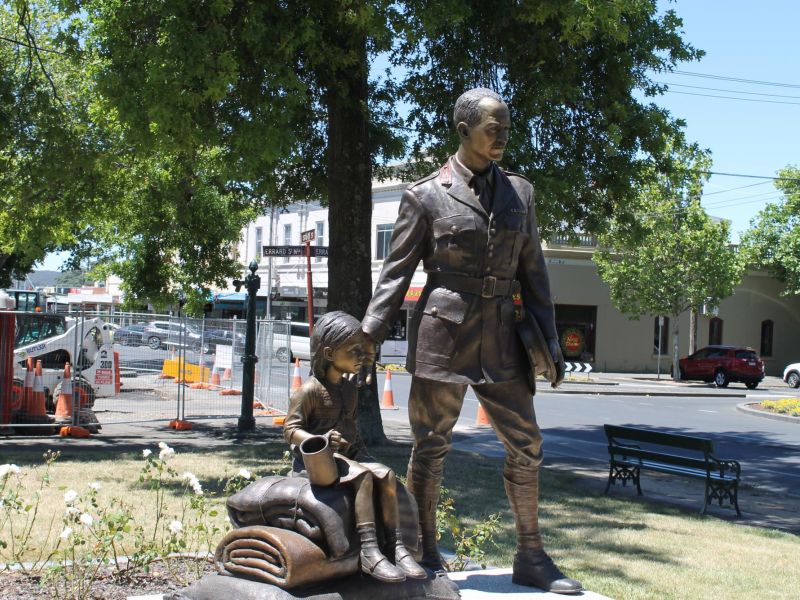George Devine Treloar
George Treloar, gentleman of fortune, was born 23 April 1884 in Ballarat, Victoria. His parents were Thomas Reid Treloar, a chemist, and Jane, nee Devine, both Victorian born.
Educated at St Patrick's College, George was a bank clerk in Ballarat for five years, then a jackeroo, a farmer and finally an actor. He was touring in England when war broke out in 1914.
Having previously served in Ballarat as a lieutenant in the 3rd Victorian Rifles, George immediately volunteered. Rejected because of defective eyesight, he wangled his way into the 20th Middlesex (Artists) Rifle Volunteers in 1915 as a private and transferred to the Coldstream Guards.
He served in France, and was promoted to major, second-in-command of the 3rd Battalion. Buried twice by shell-bursts on the Somme and almost bullet-riddled at Ypres, he was awarded the Distinguished Service Order and the Military Cross. In 1918, he commanded the Brigade of Guards Officers' School of Instruction and, following the Armistice, served with his battalion in the Rhineland Occupation Force.
In 1919, George joined the British Mission to the White Russian armies as Assistant Military Secretary to Major General Holman. At Constantinople, after the withdrawal of the mission, he served with the Tsarist army as a colonel, and later commanded a British camp for Russian refugees at Tousla on the Sea of Marmora. He became a representative of the League of Nations High Commissariat for Refugees in northern Greece.
From 1922-1926, George was engaged in the settlement of Greek refugees from Asia Minor, working at Gumuldjina (Komotini) and Salonika, which by 1923 was handling over 108,000 refugees. He was appointed to the Order of the Saviour (Gold Cross) and a refugee village (Thrilorion) near Komotini was named after him.
On 27 December 1923, George married Kathleen May Douch in Constantinople. He suffered severe financial loss in a fraudulent mining investment and in 1927 returned to Australia to seek work. Eight years later his family re-joined him.
He unsuccessfully contested the NSW Legislative Assembly seat of Ashfield for the United Australia Party in 1930, before Colonel Eric Campbell appointed him second-in-command of the new Guard. In 1931, however, George denounced Campbell as a fascist and militarist and founded his own short-lived movement, the Civic Legion.
Moving to Western Australia in 1935, he prospected and managed several mining enterprises. As "The Archer", he became known for his trenchant radio commentaries on foreign affairs and for his programme, "Perth Speaks". He stood unsuccessfully for the Legislative Council seat of West Province in 1950 and worked for the Liberal and Country League until 1956. George died on 29 November 1980 at Dalkeith and was buried in the Anglican section of Karrakatta Cemetery, Perth. His wife and two sons survived him.
George Devine Treloar is known for his humanitarian work with refugees post WWI, in which he helped 108,000 people receive food, shelter, medical care and resettlement, often in the face of bureaucratic opposition or indifference.
Source - Treloar, George Devine (1884–1980), Hugh Gilchrist
The sculpture depicts George in his humanitarian work with a young girl, nicknamed Lemona, representing the hundreds of thousands of refugees displaced by the war.
- Treloar, George Devine (1884–1980) https://adb.anu.edu.au/biography/treloar-george-devine-8845
 Western Front Association Central Victoria Branch
Western Front Association Central Victoria Branch